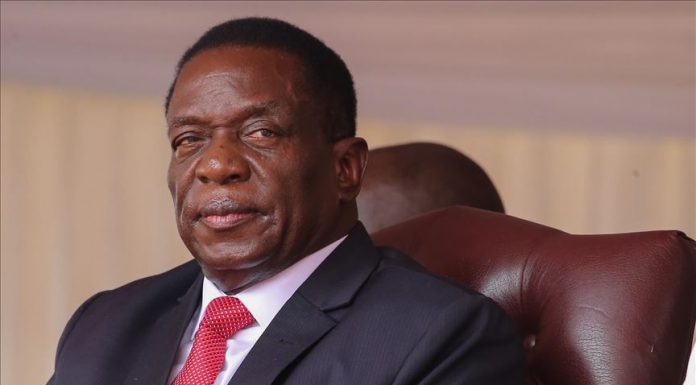By Professor Tony Hawkins for the CAA Business School
One statistic tells it all. Forty years ago, the Zimbabwe dollar was worth 150 US cents, but today it is just over 1.5 cents. Successive administrations have tried – and failed – to stem the tide of currency depreciation. The reasons for this are complex:
- Lost competitiveness in global markets due to productivity declines;
- The failure to diversify the export basket, especially into manufactures by integrating into global and regional value chains;
- Over decades, endemically low investment, domestic and foreign; and
- High inflation, partly attributable to excessive government expenditure. Country, particularly political, risk also contributed to the currency malaise
In other words, the problem is long-term and structural, but throughout the period policymakers have focused on “saving” foreign exchange and eliminating “leakages” rather than boosting foreign exchange earnings.
What is the Current Game plan and is it working?
Government’s latest measures to stabilize the exchange rate are in the same mould, designed to reduce and control the demand for foreign exchange. Despite the authorities’ best efforts, the exchange rate continues to weaken, having devalued 75% in the first half of 2020.
The current game plan is to use a variety of instruments including import controls and a plethora of interventions to restrict monetary transactions, especially on mobile platforms as well as banks and most recently the Zimbabwe Stock Exchange (ZSE). The latest measures on June 26 “suspend” mobile money agents and bulk payer transactions while imposing new restrictions on merchants’ transactions, other than those for goods and services and utility payments up to a maximum of Z$5 000 a day.
These steps and the associated temporary closure of the ZSE are designed to strangle, the parallel market in foreign exchange. But as so often is the case with blanket direct interventions of this kind, there is a very real risk that the attempted cure will be worse than the disease.
Moreover, the measures do not even begin to scratch the surface of the underlying, long-tm structural problems. Consumption spending, accounting for 80% of the Gross Domestic Product (GDP), has fallen dramatically over the past 18 months and will continue to do so because of Covid-19 and lockdowns locally, regionally, and globally. In the first four months of 2020, The Reserve Bank of Zimbabwe (RBZ) numbers show that while electronic sales and transfers rose 470%, after adjustment for inflation they were down by a fifth. That is probably a realistic estimate of how much the economy has shrunk in the last year.
In Zimbabwe, footfall in the Central Business District (CBD) is well down, due to lockdown travel curbs, while real wages are in steep decline as inflation outstrips wage increases. The May 2020 poverty line for a family if 5 of Z$8 500 a month is 3.4 times the recently increased national minimum wage.
In the first four months of 2020, mobile transactions of Z$90 billion accounted for a quarter of the total electronic payment – the vast bulk of which are inter-bank transfers, accounting for 55%. Those most affected by the crackdown will be the middle- and lower-income groups, those in remote rural areas and those without bank accounts. The net impact on business will be another reduction in spending power (impossible to say how large), increased business operating costs and a further shift towards re-dollarization. The more difficult it is to transact in local currency, the greater the use of US dollars or Rands.
The laws of unintended consequences are in play. Measures designed to reduce the demand for US dollars are, in fact, increasing that demand. The same applies to the use of import priority lists to restrict auction bids. If traders cannot even access the auction – regardless of how much they are prepared to bid and how much the survival of their business relies on imports – then they will go elsewhere i.e. to the parallel market. Making the measures even more problematic is the declining value of money. At the end of last year, the money supply was Z$35 billion. Adjusted for inflation the April 2020 figure of Z$52 billion is 14% lower, which means not only are people earning – and spending – much less, but the amount of “real” money has fallen significantly.
Over the past year, the real value of notes and coin in circulation has plunged some 70%, making non-cash transactions, and especially mobile money the most widely used means of payment in the shops or for fuel, by those without bank accounts or access to banks. Consumers and businesses are enjoined to use the local currency, but they cannot access it! This means that in an effort to stabilize the exchange rate the authorities have disadvantaged the most vulnerable members of the community, as well as harming business, especially SMEs and the informal sector – a classic example not just of unintended consequences, but of inflicting pain without gain.
Closure of the ZSE, also to curb “illicit” forex deals has attracted considerable criticism because it demonstrates how arbitrary interventions are frustrating “open for business” intentions. The Finance Minister’s claim that investors will not be disadvantaged is simply untrue because with inflation approaching 800%, asset values are declining by the day. An investor may well have “parked” funds temporarily in the equity market to preserve value. If the business now needs that money, it cannot get it. Cynics and critics accuse Treasury and the RBZ of closing the stock exchange to force investors into the gilt market to purchase the Z$500 million in 270- and 365-day Treasury Bills. The interest rate on these bills is massively negative in real terms, and even if inflation halves in the next 9 months, which is very unlikely, an investor buying the bonds today will suffer a 75% loss if he holds a 270-day investment until maturity in April 2021.
Above all, the latest measures and many others in recent months are short-termist, akin to the little boy putting his finger in the dyke to stop the water from rushing in. Other holes open up in the dam wall forcing the authorities to look for ever more draconian controls to plug the gaps. One lesson for business is that the present strategy is not working and unlikely to succeed in the future. The fact that after criticizing business for indexing prices against the US dollar, government now proposes to do exactly that for future Treasury Bills, – indexing them against the exchange rate – is just one further small step down the road to redollarisation.
Professor A.M. Hawkins is a professor of Economics with experience on the Zimbabwean economy. He writes in his personal capacity his views, thoughts and opinions expressed belong solely to him and not of CAA Business School (CBS). CBS is not responsible and does not verify for accuracy any of the information contained in this article. The primary purpose of this article is to educate and inform and this article does not constitute professional advice or service. This article is available for public, non-commercial use only and you may not edit, modify it.












